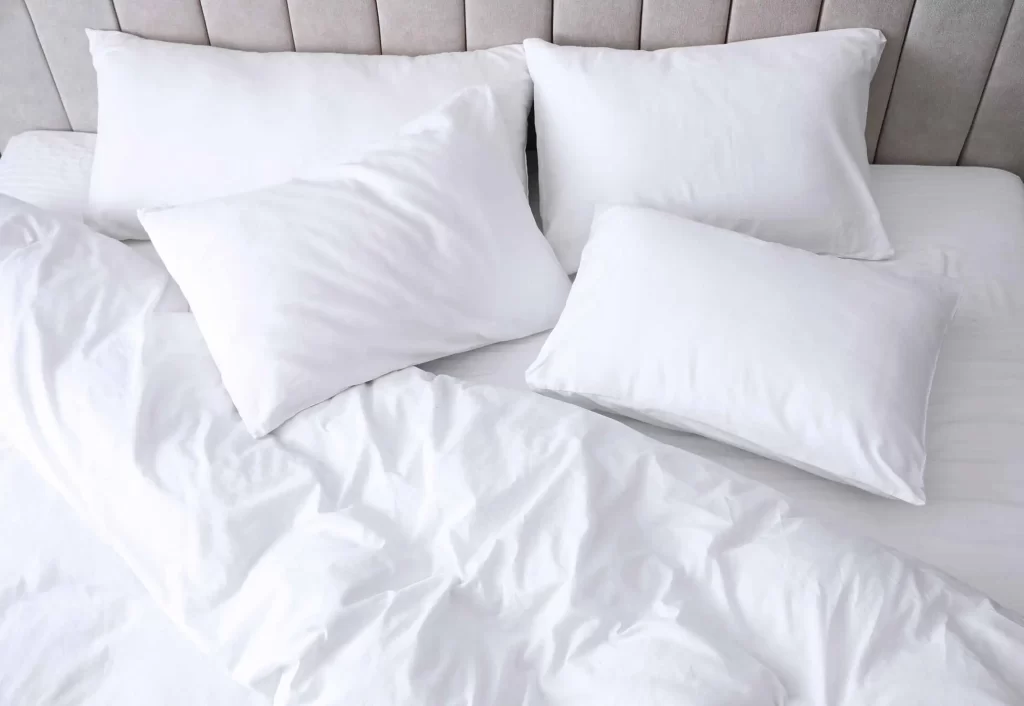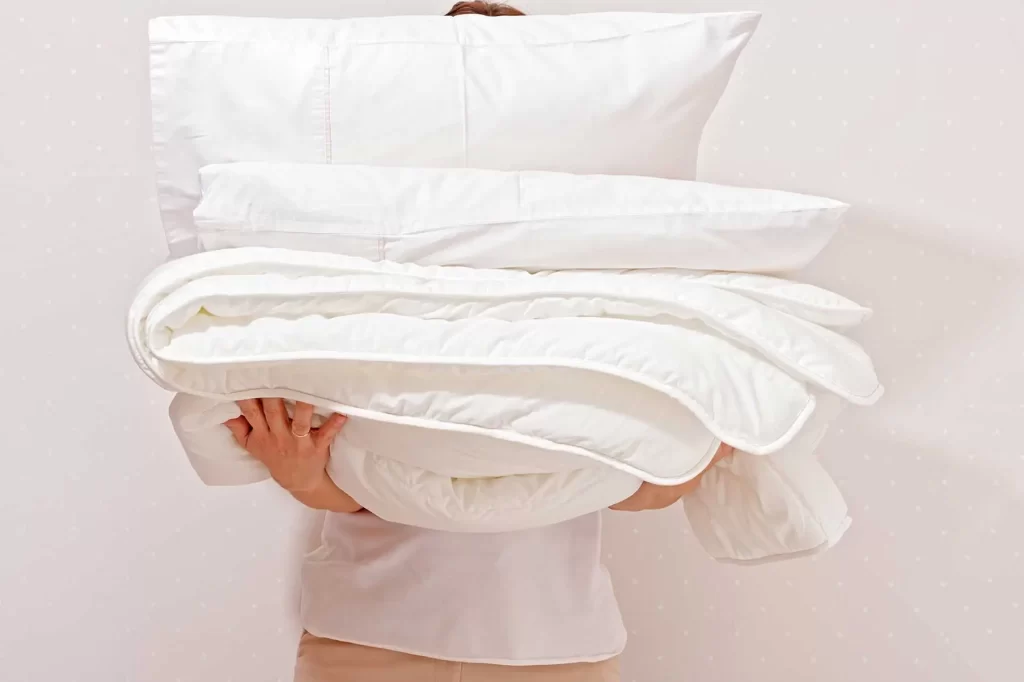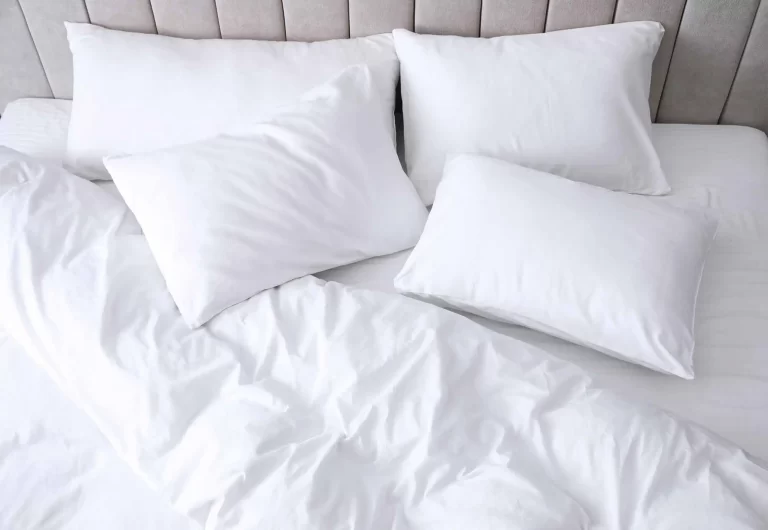Duvet Togs: Everything You Need to Know
If you’re shopping for a new duvet and have come across the term ” duvet togs,” you may wonder what this means. Togs are an essential measure of a duvet’s warmth, and it’s important to understand what they are and how to choose the right ones for your bedding needs. Let us dive into our todays write up without delay:

What is Duvet Togs?
Togs are the thermal resistance measurement of a duvet. They measure how much heat will be retained within it, helping keep you warm while you sleep. Tog ratings range from 4.5 up to 15, and each of these ratings represents how much insulation the duvet will provide.
Duvets with higher tog ratings provide more insulation and are warmer. It’s important to note that the tog rating is not related to the weight of a duvet but rather its insulating capacity. That being said, different materials such as feathers, down and synthetic fills can also impact the weight of a duvet, regardless of tog rating.
How are Duvet Togs Measured?

Tog ratings are usually displayed on duvet packaging and range from 4.5 to 15 – the higher the number, the greater the insulation and warmth of the duvet. Tog ratings can vary depending on the manufacturer, but higher tog values usually indicate heavier duvets, better suited to winter months.
The tog value is determined by measuring a duvet’s thermal resistance when it is dry and at room temperature. To do this, a particular machine measures how long it takes for a specific air volume to pass through the duvet.
It’s important to note that different countries have their methods of measuring and calculating tog ratings, so it’s best to check the packaging before buying a duvet. Generally speaking, UK and Irish customers should look for duvets with tog ratings between 4.5 and 15.0, while those in warmer climates should look for lower values between 4.5 and 7.5.
What is the Difference Between a Summer and Winter Duvet Togs Rating?
A summer duvet has a lower tog rating, usually between 4.5 and 7.5, meaning that it is thinner and less warm than a winter duvet. It is typically made from a lighter material, such as cotton or polyester, and is perfect for those milder evenings in the spring and summer.
Winter duvets have a higher tog rating of around 10-15, meaning they are thicker and warmer than summer duvets. They are usually filled with materials such as wool, polyester, feathers or down and make for a cosy night’s sleep throughout the cooler winter months. Generally speaking, choosing the right duvet for the season is essential, as you want to avoid being too hot or too cold when you’re trying to get a good night’s sleep.
What Tog Do I Need?

The number of duvet togs you need depends on the temperature of your bedroom. Generally speaking, the higher the tog rating, the warmer the duvet. The most popular tog ratings are between 7.5 and 13.5, but you can also find higher and lower options.
For summer, 10.5 to 13.5 tog is ideal for cooler nights and 4.5 to 7.5 for warm nights. During winter, a 13.5 to 15 tog is best for most people’s needs. It is important to remember that all duvets come in different sizes and weights, so if you live in a freezing area or your room is draughty, you may opt for a higher tog rating.
When selecting your duvet, it’s best to consider both the temperature of your bedroom and the material of your duvet. For instance, down duvets tend to be more lightweight than synthetic duvets, so you may need a higher tog rating if you’re looking for warmth.
No matter your needs, there’s a perfect duvet with just the right amount of togs! To ensure you get exactly what you need, read reviews from other customers who have purchased duvets with similar ratings and material types.
How Can I Use Togs to Save Energy?
Using the correct tog rating for your duvet can help you save energy and lower your electricity bills. A thicker tog rating will trap air and heat, meaning you won’t need to turn up the thermostat.
Conversely, if you use a low tog during warmer months, you won’t have to run your air conditioning unit as much.
To take full advantage of togs, select a duvet with removable layers to adjust the warmth depending on the season. For example, if you live in a cooler climate, opt for a 13.5 tog duvet and add an extra 4.5 tog layer for warmth during winter. Another way to maximise your duvet’s energy-saving potential is to invest in an anti-allergy duvet that is also breathable.
How to Choose a Duvet with Perfect Tog?

Choosing the right duvet is essential for a comfortable night’s sleep. Togs (Thermal Overall Grade) are the measure of thermal insulation, so when choosing the perfect duvet, you should select one that matches your desired level of warmth.
The higher the tog rating, the greater the insulation; therefore, the warmer the duvet will be. If you tend to sleep hot, you should opt for a lower tog rating; conversely, a higher tog rating is advisable if you prefer to sleep in a colder bedroom.
In addition to considering your personal temperature preferences, you should also consider the season when selecting the perfect tog for your duvet. During summer months, you may want a lighter duvet with a tog rating of around 4.5 – 7.5, whereas during winter months, a higher tog rating of 13.5 – 15 may be more suitable.
You should also consider the type of fabric and filling when selecting a duvet, as these can affect its thermal properties. Cotton is an excellent choice for its breathability and natural cooling properties, while natural fillings such as wool and feather provide excellent warmth and comfort.
Overall, selecting a duvet with the perfect tog rating is a matter of personal preference, so it’s essential to consider the temperature in your bedroom and your own temperature needs when deciding.
What are Different Duvet Tog Ratings?
● 4.5 Tog Duvets: A lightweight, single-season duvet perfect for summer use.
● 7.5 Tog Duvets: A lightweight, dual-season duvet that can be used in spring and summer.
● 10.5 Tog Duvets: A medium-weight, all-season duvet suitable for all climates.
● 13.5 Tog Duvets & 15 Tog Duvets: A heavier winter duvet best suited for cold climates.
Which Duvet Type is Best?

The weather can be tricky to plan for when choosing the right duvet for your bed. With varying temperatures throughout the year, you want to ensure you have the best duvet for the current season. An excellent way to ensure this is by choosing a duvet tog rating appropriate for the current climate.
Ultimately, choosing the right tog for your duvet will help you enjoy a comfortable and restful night’s sleep regardless of the season. Let us give an overview of various seasons:
Duvet Togs for Summer
The temperature is relatively mild in summer, so you don’t need a thick duvet. The ideal tog rating for summer is generally 4.5 or lower, keeping you cool and comfortable during warm nights. If you feel too hot during the night, a lighter tog can be used instead of a thicker one.
When it comes to material, cotton is the best choice for summer duvets as it is lightweight and breathable. A synthetic duvet may trap more heat, making it uncomfortable during summer. Additionally, look for hypoallergenic duvets and dust mite resistant to enjoy a good night’s sleep without allergies or discomfort.
For those who feel too hot, even with a light duvet, a light cotton flat sheet with a thin coverlet is another option. This layering system works well in both hot and cold climates. It also allows you to mix and match different pieces for different temperatures, depending on your needs.
Finally, keep in mind that temperature regulation can be improved by sleeping with an airy duvet cover and an additional light sheet. Air circulation is critical to sleeping comfortably during the summer months. With these simple tips, you can ensure you have a good night’s sleep no matter the season!
Duvet Togs For Winter
Regarding duvet tog ratings for winters, the recommended tog is between 13.5 and 15. The winter duvets are usually made of synthetic or natural materials, such as wool, silk, and feathers.
The heavier and denser these materials are, the higher the tog rating and the warmer your duvet will be. If you live in an icy part of the country, consider purchasing a thicker duvet with a higher tog rating.
When you purchase a winter duvet, check the label carefully for the tog rating and insulation details. It would help if you also considered whether you prefer a heavier or lighter duvet, as this will affect the warmth of your bedding. A warm and comfortable night’s sleep is essential for a good night’s rest, so make sure to make quality for your winter duvet.
Finally, it’s important to remember that the tog rating of your winter duvet only tells part of the story regarding its warmth. It’s worth considering other factors, such as fabric composition and loft, when selecting a duvet for winter weather. Make sure you choose a high-quality and comfortable duvet to enjoy a cosy and restful night’s sleep.
Duvet Togs for Autumn and Spring
The autumn and spring months can be unpredictable and vary significantly from year to year. The temperature can range from excellent to mild and then back again. During these months, it is essential to find the perfect duvet tog that will provide you with the ideal warmth without causing you to overheat.
A lighter-weight duvet of 10.5 togs is perfect for autumn and spring. This duvet is light enough to keep you warm during cool nights but won’t cause you to overheat when temperatures climb. Additionally, 10.5 togs are breathable, allowing air to circulate and keep you at the optimal temperature.
If you feel cold quickly, you may opt for a 13.5 tog duvet. These thicker duvets offer more warmth and make sleeping easier through cool nights. However, it is essential to remember that too much warmth can cause you to overheat, so try to find a duvet with a high breathability rating.
Frequently Asked Questions
Final Thoughts
The warmth level of your duvet depends on the tog rate. No matter which duvet togs you choose for your home, make sure that it can keep you comfortable without making you too hot. With the right amount of warmth and breathability, you will get a good night’s sleep no matter what the weather outside is like! If you are still determining which rating will suit you most regarding your needs, the above guidelines will help you a lot.







